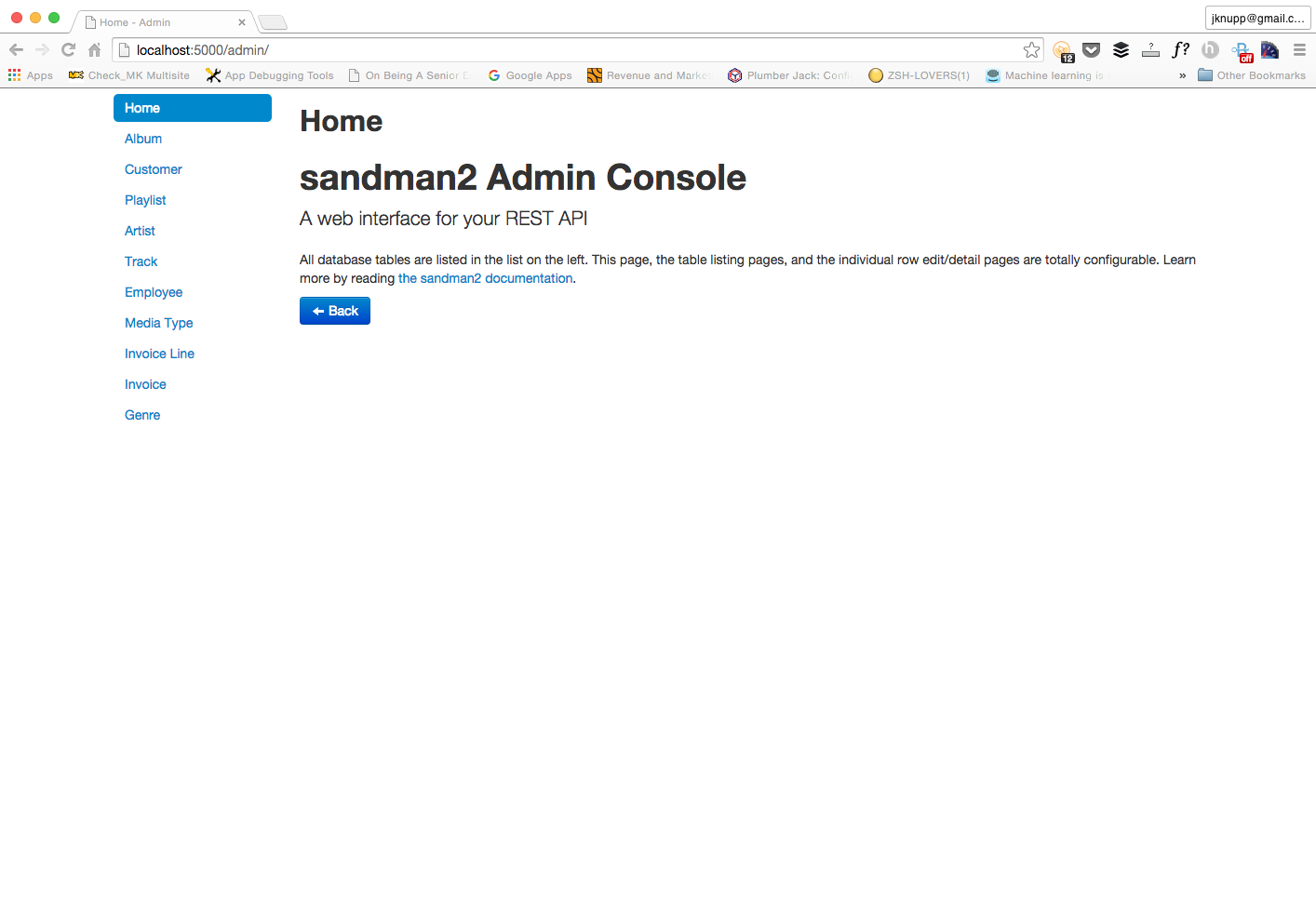sandman2 automagically generates a RESTful API service from your existing database, without requiring you to write a line of code. Simply point sandman2 to your database, add salt for seasoning, and voila!, a fully RESTful API service with hypermedia support starts running, ready to accept HTTP requests.
This is a big deal. It means every single database you interact with, from the SQLite database that houses your web browser's data up to your production PostgreSQL server can be endowed with a REST API and accessed programatically, using any number of HTTP client libraries available in every language. sandman2 frees your data.
For developers:
Imagine you're working for AnonymousCorp and need to access Group Y's data, which is presented to you through some horrible API or GUI. Wouldn't it be nice if you could just interact with that database through a REST API?
More than that, imagine if you could interact with the database through
a REST API and no one had to write any code. Not you. Not Group Y.
No one. That means no boilerplate ORM code, no database connection
logic. Nothing. sandman2 can be run as a command-line tool
(sandman2ctl) that just takes your database information as
parameters and connects to it, introspects the schema, generates a
RESTful API, and starts the server.
`sandman <http://www.github.com/jeffknupp/sandman>`__, the precursor
to sandman2, is no longer being maintained. sandman had almost
identical functionality but had an architecture that reflected the
capabilities of the underlying ORM, SQLAlchemy. As of the 0.9
release, SQLAlchemy introduced the automap construct. This
fundamentally changed the way that sandman could interact with the
underlying database in a way that greatly simplified things. All that
was needed was the actual effort to rewrite sandman from scratch...
After wrestling with the idea for a while, I finally gave in and started
the rewrite project. sandman2 is that project. While I'll continue
to support sandman in the nearterm, sandman2 definitely
represents the way forward.
NOTE: sandman2 is not yet at feature parity with the original
sandman, but should be soon. Getting there is currently the top
priority.
Install sandman2 using pip: $ pip install sandman2. This
provides the script sandman2ctl, which just takes the database URI
string, described
here. For
example, to connect to a SQLite database in the same directory you're
running the script, you would run:
$ sandman2ctl sqlite+pysqlite:///database_file_nameTo connect to a PostgreSQL database, make sure you install a driver like
psycopg2 using pip, then use the following connection string:
$ sandman2ctl postgresql+psycopg2://scott:tiger@localhost/mydatabaseAgain, see the SQLAlchemy documentation for a more comprehensive discussion of connection strings.
sandman2 supports all databases that the underlying ORM, SQLAlchemy, supports. Presently, that includes:
- MySQL
- PostgreSQL
- Oracle
- Microsoft SQL Server
- SQLite
- Sybase
- Drizzle
- Firebird
Third-party packages extend support to:
- IBM DB2
- Amazon Redshift
- SQL Anywhere
- MonetDB
One of the best things about the original sandman was the Admin Interface. Not only does sandman2 include the Admin Interface, but it modernize's it as well. The layout has been greatly improved, especially when dealing with larger numbers of tables. All of the original functionality of the Admin Interface remains unchanged.
Here's a shot of the new look:
If sandman2ctl doesn't give you fine-grained enough control over
your REST endpoints, or you'd like to restrict the set of tables made
available via sandman2ctl, you can easily integrate sandman2
into your application. See the documentation for more info.
